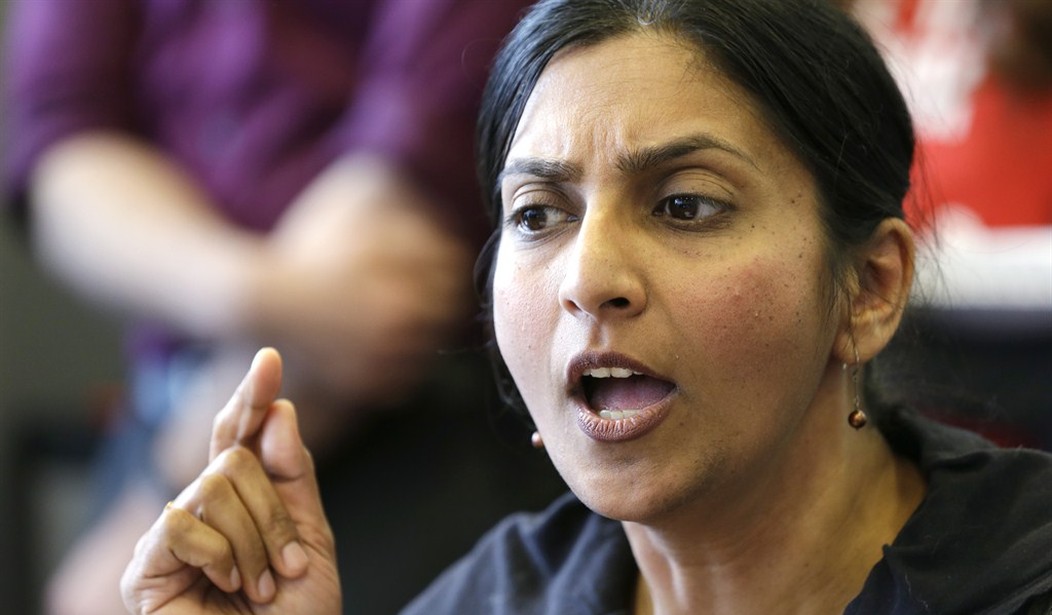Monday, Ed wrote about a newly published study by researchers at the University of Washington which found that Seattle’s minimum wage hike was having an adverse impact on low-wage employees. That result did not sit well with proponents of raising the minimum wage. So much so that a city councilwoman and the city’s mayor, who knew about the UW findings in advance, made arrangements to produce a contrary study and have it published first. From the Seattle Weekly:
The timeline seems to have gone like this: The UW shares with City Hall an early draft of its study showing the minimum wage law is hurting the workers it was meant to help; the mayor’s office shares the study with researchers known to be sympathetic toward minimum wage laws, asking for feedback; those researchers release a report that’s high on Seattle’s minimum wage law just a week before the negative report comes out.
Today, Fox News has a report that spells out exactly who was behind this effort to undermine the UW study:
“The moment we saw it was based on flawed methodology and was going to be unreliable, the Vigdor study no longer speaks for City Hall,” said Seattle City Councilwoman Kshama Sawant.
Sawant, a former economics professor at Seattle Central Community College who ran for office as a Socialist, accused the UW team of “ideologically editorializing.” She and Mayor Ed Murray then contacted Michael Reich, an economics professor at the University of California at Berkeley.
Reich is currently co-chair of the Institute for Research on Labor and Employment. Before earning his PhD in economics from Harvard, Reich was a founding member of the Union for Radical Political Economics (URPE), a group seeking a “human-centered radical alternative to capitalism,” according to its website…
According to emails obtained by Fox News, Reich was given a deadline by Murray. His work was to be completed just before the University of Washington team announced its results.
Councilwoman Sawant lists the minimum wage hike as one of her major issues on her city council page, “I was elected by working people in Seattle to be a voice for raising the minimum wage, for affordable housing, and for taxing the rich to fund public transportation and public education.” It also reads, “The victory for $15/hour in Seattle has inspired workers across the country and around the world.”
So Sawant and Mayor Murray, who is not running for reelection because of a sex scandal, contacted a far-left economist who has written reports on minimum wage increases, all of which found raising the wage has no downside. And by ensuring this pro-minimum-wage-hike report was published first, they sought to minimize the impact of the contradictory UW report. But it sounds as if the reasons for the differing outcomes are largely based on the UW report having access to better data. Inlander interviewed the researcher behind the UW report:
“The issue that a lot of previous studies have faced is you don’t actually get to see what people’s wage rates are,” says Vigdor, a professor at the UW’s Evans School of Public Policy & Governance and former faculty member at Duke University’s Sanford School of Public Policy.
“You have to pick something else … You pick a sector of the workforce that you think the work being done is low-wage work.”
As a result, many previous studies look at just teenagers, or just the restaurant industry.
That’s what the Berkeley study, released last week, did. It found that pay for food-service workers increased increased by about 1 percent in the food service industry, and 2.3 percent in limited-service restaurants (think fast-food joints).
The problem with the approach taken by most studies is that they a) only look at a small subset of low-wage workers and b) lump in a lot of higher wage workers who work in the same industry. But Vigdor’s report looked at actual wage data which allowed him to select out just the low-wage workers across a broader range of jobs. Looking at the more comprehensive data, Vigdor found some slight increases in wages but those were more than offset by a reduction in hours.
One of the criticisms of Vigdor’s approach has been that he did not include multi-state employers because he couldn’t identify which specific employees were located in Seattle. That means he had to leave out about 38% of low-wage employees in the city. However, Vigdor surveyed Seattle multi-state employers, asking them about their response to the wage increase. He found they were more likely than the small employers to cut hours in response to the wage hikes. So, in his view, adding those employers in would likely make the findings in his report stronger, not weaker.
As a check, Vigdor tried lumping all of the restaurant data together, i.e. not selecting out the low-wage workers, and suddenly the adverse impact of raising the minimum wage disappeared. In other words, if he did the research the same way as the Berkeley researchers, he got the same results. That suggests it’s the specificity of his data that is giving him the different result.
It seems clear that Seattle’s progressive leadership went data shopping when it didn’t like the results of the forthcoming UW report. So when you hear that “other reports” showing contradictory information, keep in mind those reports didn’t appear by accident. They were arranged by partisans with an ideological axe to grind.








Join the conversation as a VIP Member